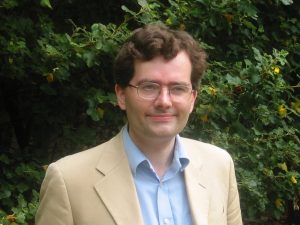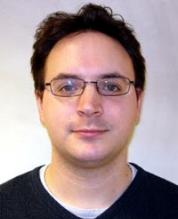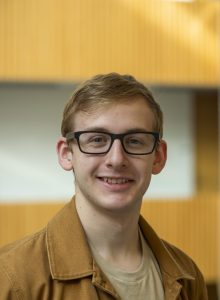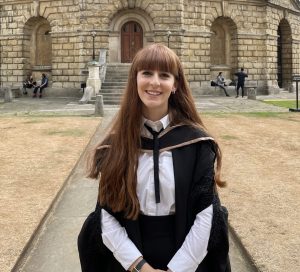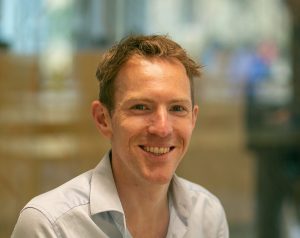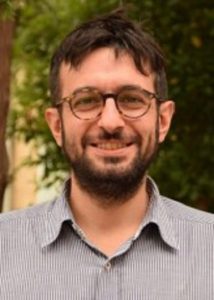About the Course
The Oxford Mathematics courses have for many years included options in Statistics. In response to strong demand for statistical knowledge, there is now a joint degree course in the two disciplines. Admission to Mathematics is joint with Mathematics & Statistics, and applicants do not choose between the two degrees until the end of their fourth term at Oxford.
Mathematics
The college has tutors in all the main branches of Mathematics, who are committed to mathematical research as well as to teaching, and who together cover a wide range of subjects.
Teaching in Mathematics, as in most other subjects, has two components: University lectures, and college tutorials or classes.
As for the College side; in the First Year the syllabus is compulsory, and all Mathematics and Mathematics and Statistics students follow the same course. The lectures, which are interrelated, are intended to cover the syllabus completely. In tutorials and college classes, you discuss with your tutor what you have learnt from lectures, and work through your solutions to problems designed to test your understanding. Problems are set by the lecturers in the first year, though in some subjects your tutor may set different ones instead. Your tutor is also likely to suggest some reading to do, and this reading may also be discussed in the tutorials. The college operates a generous book grant scheme, which subsidizes the purchase of necessary textbooks by undergraduates. Tutorials are ‘pupil-centred’ teaching in which the student determines the subject matter; their usefulness depends entirely on how thoroughly the student has prepared for them.
At the end of the summer term of the first year, University examinations are held. It is necessary to spend some time revising for these, and lectures therefore finish halfway through the term; college teaching continues in the form of revision classes and tutorials. College Scholarships and Exhibitions may be awarded at the end of the first year to students who have worked well; the results of first-year exams play a major role in decisions on these awards.
In the second year the syllabus contains compulsory courses in algebra and analysis that are taken in the autumn term. Teaching is likely to involve a combination of tutorial and larger classes. Optional courses are also available and for these the teaching arrangements can be more varied; a student might have a single weekly tutorial to cover two or three related options, or those taking a particular option might be taught together in a class, or there might be some intermediate arrangement combining classes with shared tutorials. The college tutors between them cover nearly all the available options, but for one or two options teaching might be arranged with a specialist in another college. The tutors will set written work and reading on an individual basis. Second-year lectures aim more at providing a framework than a comprehensive treatment, and so the importance of reading and learning from your own study is greater than in the first year. Examinations at the end of the second year count towards the final degree mark. There are two papers on the compulsory core subjects and two cross-sectional papers on the selected topics.
In the third year (and fourth year) of the course, the syllabus provides a very wide range of options at a more advanced level. Each student will select only a few of these options. Teaching is usually by means of intercollegiate classes that run in parallel with the lectures. These classes are normally conducted by a faculty member and a graduate assistant; written work is set and marked each week and then discussed in the class. Although this teaching does not take place in college, the college tutors carefully monitor each student’s progress and are always available if any difficulties arise. Each student is assigned to one tutor who acts as ‘in-college supervisor’, and who will stay in touch with the student even though he may not be directly involved in the student’s teaching.
The Mathematics degrees can lead to either a BA after three years or an MMath after four years, though you will not be asked to choose between these until your third year.
If you have a mathematical interest that is not catered for by the syllabus, there are several ways in which you may pursue it. Students may choose to enter the competition for the College Mathematics Essay Prize or the Vaughan Prize (awarded for outstanding work in Mathematics.) This involves writing an essay on a mathematical subject of your own choosing: essays of high enough quality can win substantial prizes of over £100. There is no restriction on the number of students who may be awarded prizes in any one year. It is also possible, with your tutor’s support, to take a subject of your own choosing as part of the final exam; such a proposal needs to be approved by the faculty board.
At the end of the course come the final examinations, on which your degree result depends. College tutors conduct revision classes and tutorials to prepare for these exams in the spring and summer terms. Whatever you do after graduating, we hope that you will remember your time at Jesus as one when you enjoyed the intricate and beautiful challenges of Mathematics.
Mathematics and Statistics
Statistics is a subject that studies numbers which are in some sense descriptive. As an academic study, it concerns the underlying, largely mathematical, theory relating the characteristics of a population to the statistics drawn from a sample of its members. Statistics, like Mathematics, is an intellectual discipline in its own right, and also an essential tool in many other fields of study.
The first year of the Mathematics and Statistics course is identical to the first year of the Mathematics degree.
The second year has some differences from the Mathematics degree. The courses in Probability and Statistics are compulsory for Mathematics and Statistics students (rather than optional), and Mathematics and Statistics students have access to an additional long option on Simulation & Statistical Programming.
In the third year students take eight units of courses and the course in Applied and Computational Statistics is compulsory (and counts as two units). At least two courses must also be taken from the list below. Mathematics and Statistics students can also choose courses from the Mathematics department options (see here for details).
- Applied Probability (covering probabilistic modelling with continuous-time Markov chains, and applications such as queuing theory)
- Foundations of Statistical Inference (understanding how data can be interpreted in the context of a statistical model)
- Statistical Machine Learning (covering a number of different machine learning methods and how to choose an appropriate method)
- Statistical Lifetime Models (estimating event-time distributions, which appear in many social and medical data contexts)
There are two Mathematics and Statistics degrees, the three-year BA and the four-year MMath. You can wait until your third year before deciding whether to complete a BA that year or proceed to the MMath in a fourth year
Departmental Prospectus
The Mathematical Sciences departmental prospectus contains information about the course content and can be found here.

